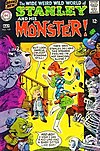
Starman is a name used by several different DC Comics superheroes, most prominently Ted Knight and his sons David and Jack.
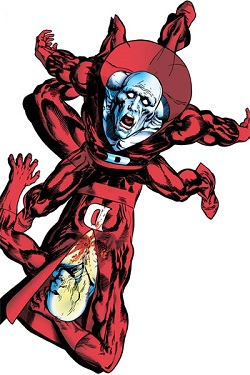
Deadman is a superhero appearing in American comic books published by DC Comics. He first appeared in Strange Adventures #205, and was created by writer Arnold Drake and artist Carmine Infantino.

Etrigan the Demon is a superhero appearing in American comic books published by DC Comics. Created by Jack Kirby, Etrigan is a demon from Hell who, despite his violent tendencies, usually finds himself allied with the forces of good, mainly because of the alliance between the heroic characters of the DC Universe and Jason Blood, a human to whom Etrigan is bound. Etrigan is commonly depicted as a muscular humanoid creature with orange or yellow skin, horns, red eyes, and pointed, webbed ears, who frequently speaks in rhymes. The character was originally based in Gotham City, leading to numerous team-ups with Batman.

The Metal Men are a group of robot superheroes that appear in DC Comics. The characters first appeared in Showcase #37 and were created by writer Robert Kanigher and artist Ross Andru. Debuting in the Silver Age of Comic Books, the characters have appeared in comic books and other DC Comics-related products such as animated television series, clothing, figurines and trading cards.

Giovanni "John" Zatara, simply called Zatara, is a fictional magician and superhero appearing in American comic books published by DC Comics. The character first appeared in Action Comics #1 in 1938 during the Golden Age of Comic Books, making him one of DC Comics' oldest characters.
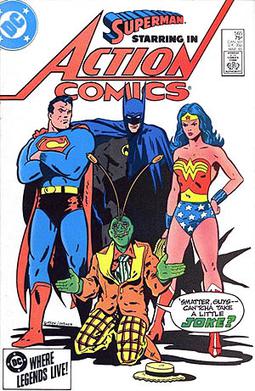
Ambush Bug is a superhero appearing in American comic books published by DC Comics. His real name is supposedly Irwin Schwab, but he has mental problems that prevent him from truly understanding reality around him, so even his true identity might be no more than a delusion on his part. His origin is disputed, although the most commonly accepted origin is that Brum-El of the planet Schwab sent his clothes from his supposedly doomed planet, hoping that his wardrobe would survive, only to have it intercepted by a giant radioactive space spider. In the resulting crash, only two articles of clothing survived: the Ambush Bug suit, which was subsequently found by Irwin Schwab; and "Argh!Yle!", an argyle sock with a Doctor Doom-like complex, complete with metal mask.

Doctor Occult is a fictional superhero appearing in American comic books published by DC Comics. Created by Jerry Siegel and Joe Shuster, Doctor Occult is an occult detective, private investigator and magic user who specializes in cases involving the supernatural. Doctor Occult first appeared in 1935 during the Platinum Age of Comic Books. He was published by National Comics Publications and Centaur Publications within anthology titles. He is the earliest recurring, originally featured fictional character still used in the DC Universe. He is sometimes affiliated with the All-Star Squadron and has appeared in paranormal-related stories by DC and Vertigo Comics titles.

Klarion the Witch Boy is a supervillain appearing in American comic books published by DC Comics, having first appeared in The Demon #7 and was created by Jack Kirby. The character is typically portrayed as a powerful but mischievous, immature extradimensional warlock who serves as both the archenemy of Etrigan the Demon and is a reoccurring adversary for various mystic characters and teams in the DC Universe.

Ibac is a supervillain featured in American comic books published by Fawcett Comics and DC Comics. Primarily, versions of the character serve as parallels to Captain Marvel/Shazam and Black Adam, sharing significant histories with these characters and similar powers. The first version of the character is Stanley Printwhistle, a petty criminal who gains extraordinary abilities and transforms into "Ibac". In the original Fawcett Comics version, Ibac is empowered by Lucifer. However, following the events of Crisis on Infinite Earths, the character's powers are implied to be attributed to Blaze.
The Fox and the Crow are a pair of anthropomorphic cartoon characters created by Frank Tashlin for the Screen Gems studio.

Uncle Sam is a superhero appearing in American comic books published by DC Comics. Based on the national personification of the United States, Uncle Sam, the character first appeared in National Comics #1 and was created by Will Eisner.
The Trigger Twins are the names of two sets of fictional Western themed comic book characters published by DC Comics.

Anthro is a fictional superhero character published by DC Comics, presented as the "first boy", a caveman born to Neanderthal parents. Anthro was created by cartoonist Howard Post; he first appeared in Showcase #74.

Superman and Batman: World's Funnest is an American single issue prestige format comic book published in 2000 by DC Comics. It was written by Evan Dorkin and illustrated by many artists. It is an Elseworlds tale and as such is not considered part of the main DC canon/continuity. Despite the title, Batman and Superman play only a small role in the story which stars instead Mr. Mxyzptlk and Bat-Mite as the main protagonists. The book pokes fun at many comic book conventions and DC heroes from the Golden through to the Modern Ages. Its setting is a multiverse similar to the Pre-Crisis DCU but also includes references to other Elseworlds tales, the modern DCU, the DCAU and even pays a visit to Crisis on Infinite Earths.
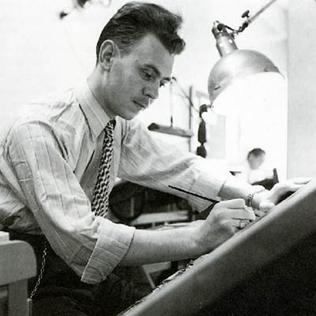
James Winslow "Win" Mortimer was a Canadian comic book and comic strip artist best known as one of the major illustrators of the DC Comics superhero Superman. He additionally drew for Marvel Comics, Gold Key Comics, and other publishers.
Space Cabbie is a science fiction character in DC Comics.
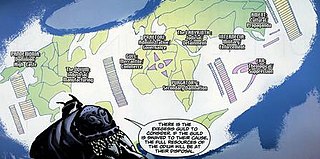
Hell is a fictional location, an infernal Underworld utilized in various American comic book stories published by DC Comics. It is the locational antithesis of the Silver City in Heaven. The DC Comics location known as Hell is heavily based on its depiction in Abrahamic mythology. Although several versions of Hell had briefly appeared in other DC Comics publications in the past, the official DC Comics concept of Hell was first properly established when it was mentioned in The Saga of the Swamp Thing #25–27 and was first seen in Swamp Thing Annual #2 (1985), all of which were written by Alan Moore and illustrated by Stephen Bissette and John Totleben.
National Comics Publications and All-American Publications, two precursors to DC Comics, were formed publishing American comic books such as superhero comics starting in the 1930s. Primary Comic book anthology titles created by the company was More Fun Comics, Adventure Comics, Detective Comics, Action Comics, All-American Comics and Superman. Other companies like Quality Comics and Fawcett Comics would later be merged into DC. Quality started by introducing comic books like Feature Comics and Smash Comics.
Red Tornado is a codename for different characters appearing in American comic books published by DC Comics that appear in the mainstream and other realities. The most common of them is Ma Hunkel and the android version.

